Sargassum Sampling
March 21, 2023
Ellen Park
As you may or may not have heard about in recent news stories, such as “Why huge masses of seaweed are floating to Florida and the Gulf” in the Washington Post, the floating seaweed Sargassum is a pretty hot topic right now. As more and more Sargassum washes up on beaches each year, scientists and the greater community want to understand how and why this Sargassum belt is growing. On this cruise, we are able to participate in some of the exciting scientific efforts to answer these questions.
Dennis McGillicuddy from Woods Hole Oceanographic Institution in Woods Hole, MA along with collaborators Chuanmin Hu and Brian Barnes from the University of South Florida in St. Petersburg, Florida, and Brian LaPointe from Florida Atlantic University in Ft. Pierce, are tracking the Sargassum belt from satellite observations and analyzing opportunistic samples collected from research cruises, such as the one we are on now!
As you can see from the satellite image of the Sargassum belt below (courtesy of Brian Barnes and Chuanmin Hu), the A16N line cuts right through the heart of the belt in the eastern Atlantic.
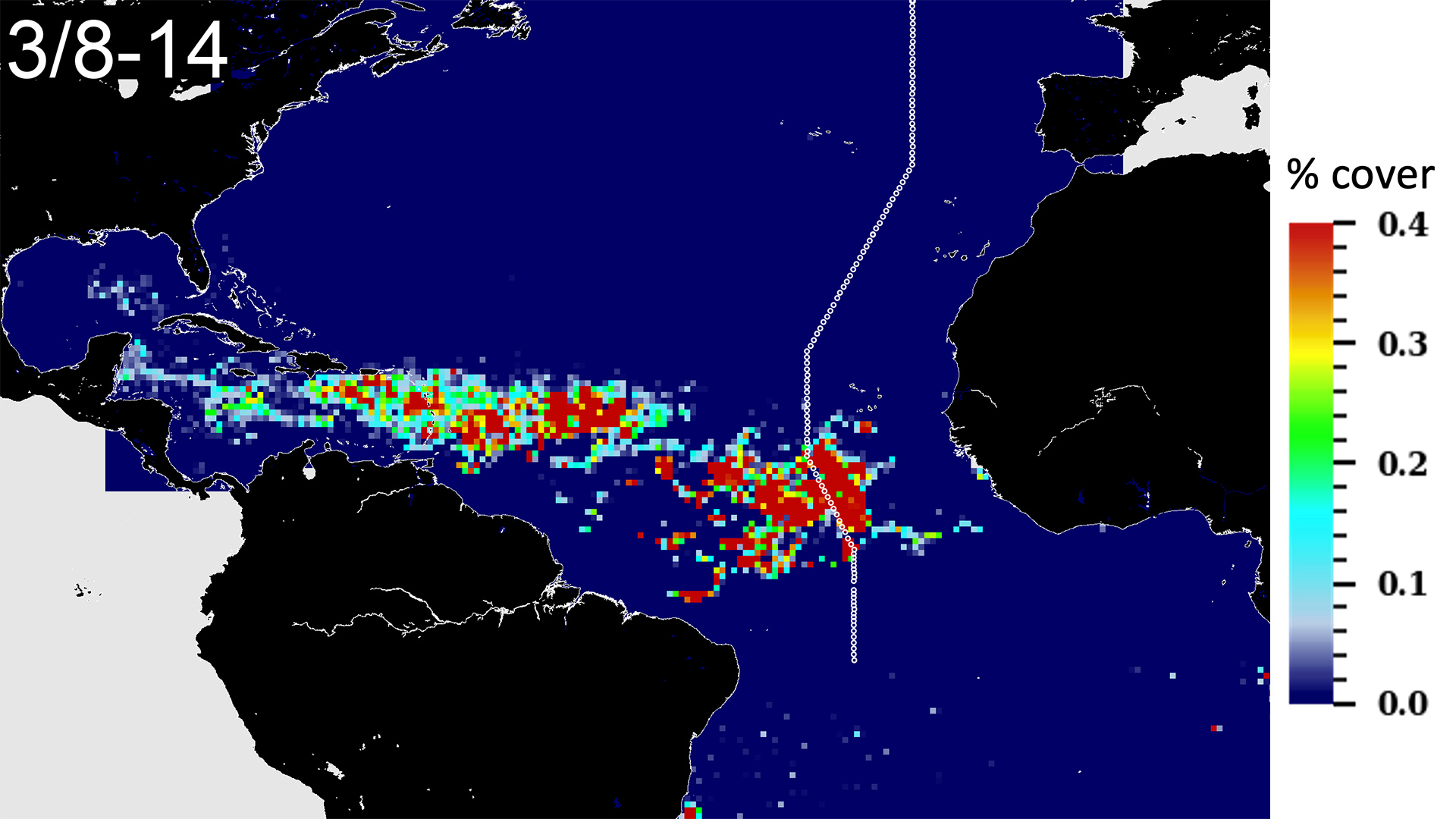
We’ve been able to observe and collect samples from this part of the belt before and after CTD casts. The size of the Sargassum patches that we see vary from small “tufts” to much larger mats.
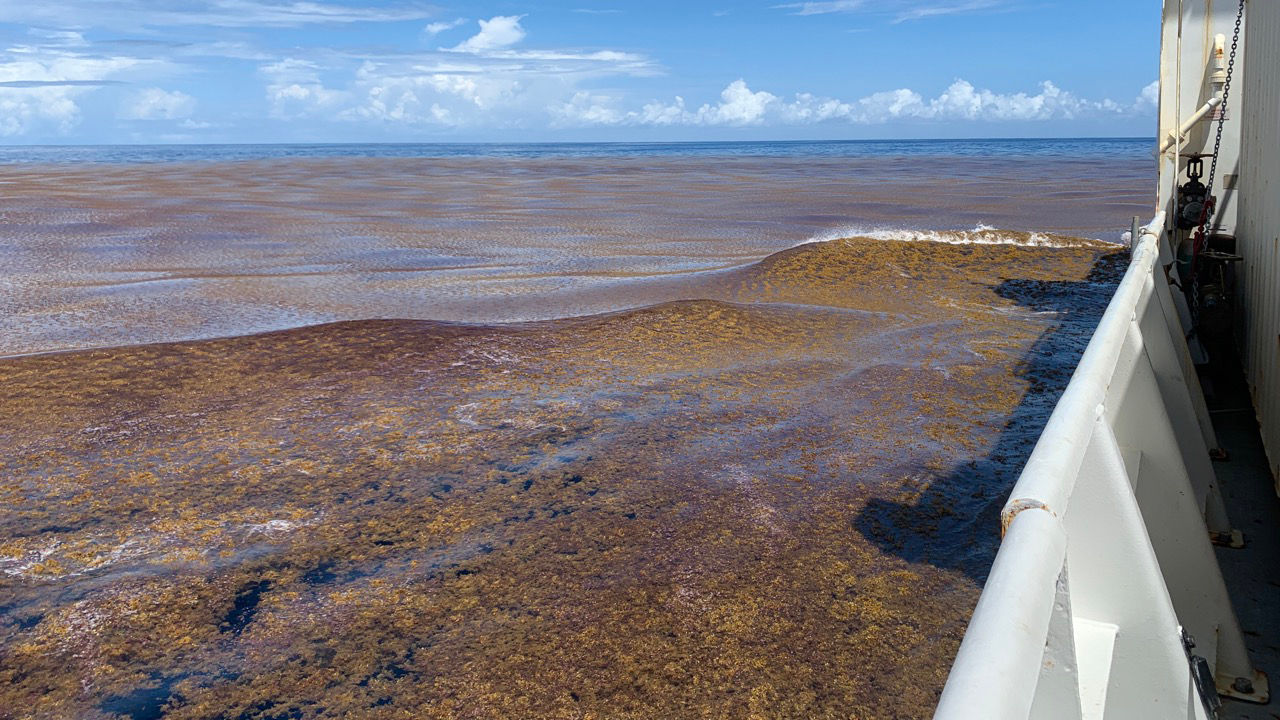
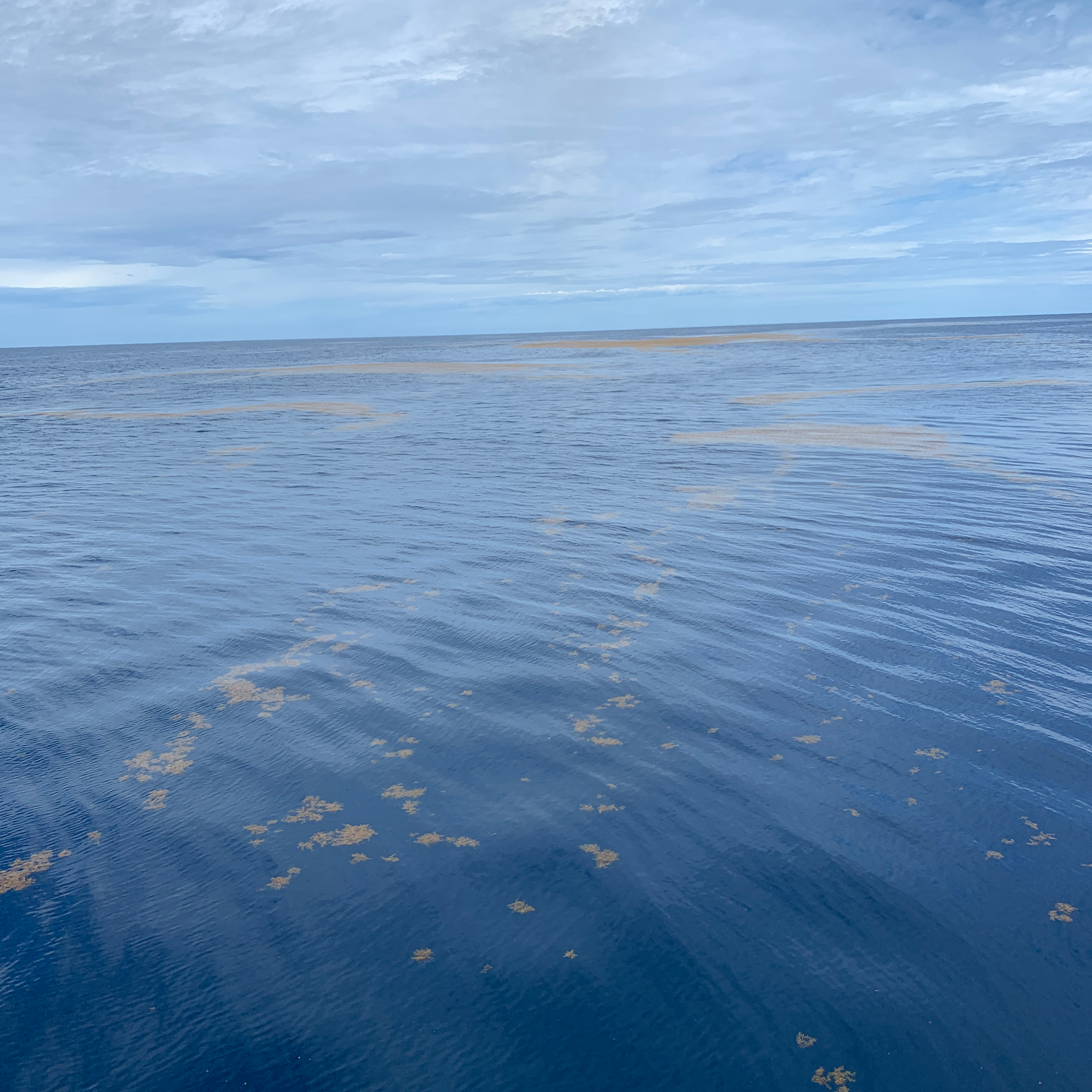
To collect samples, we use a large net to collect patches the float next to the boat.
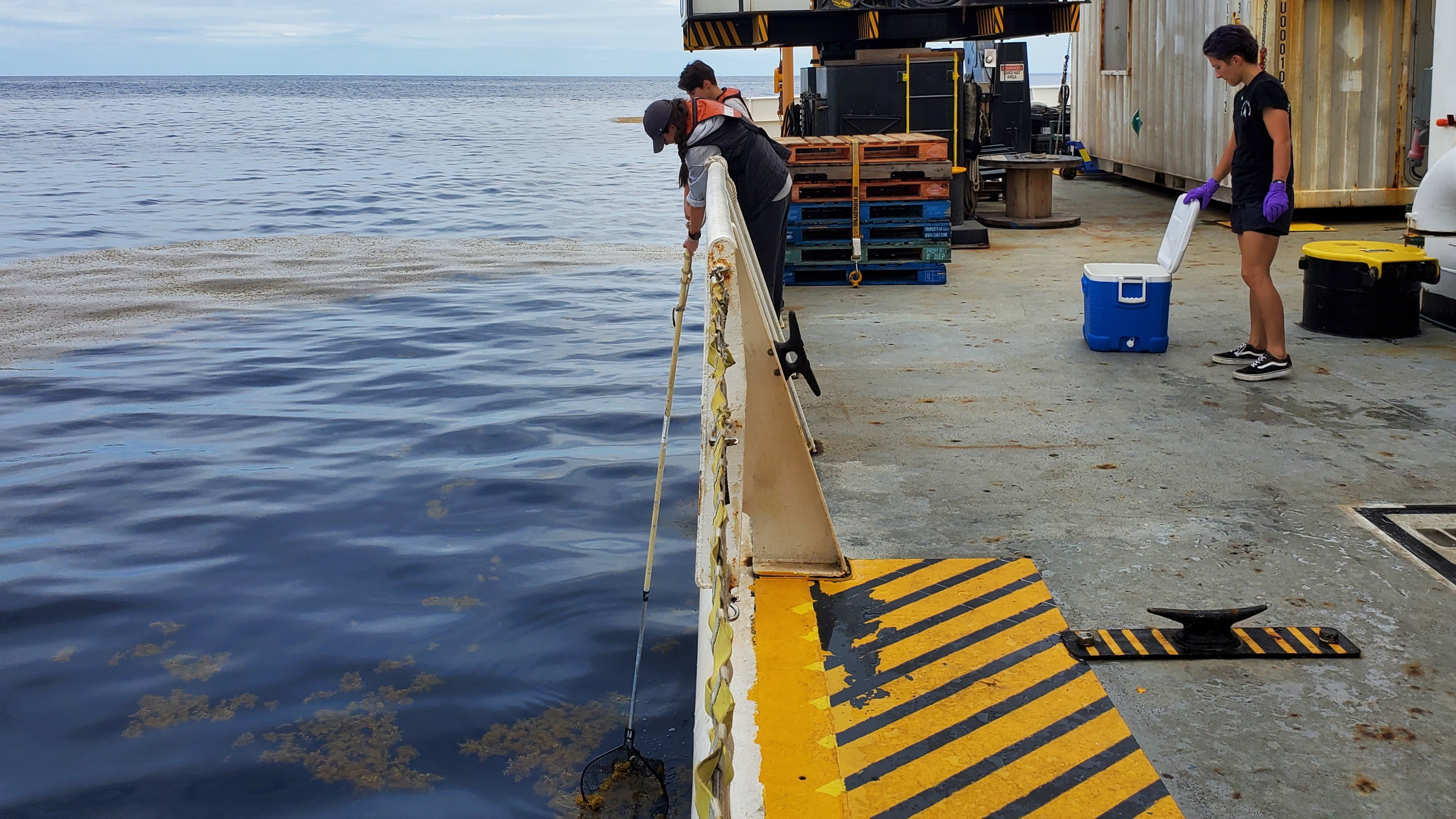
Once the samples are on deck, they are sorted by species and then dried for storage and eventual analysis. Sometimes we find little critters like this crab!
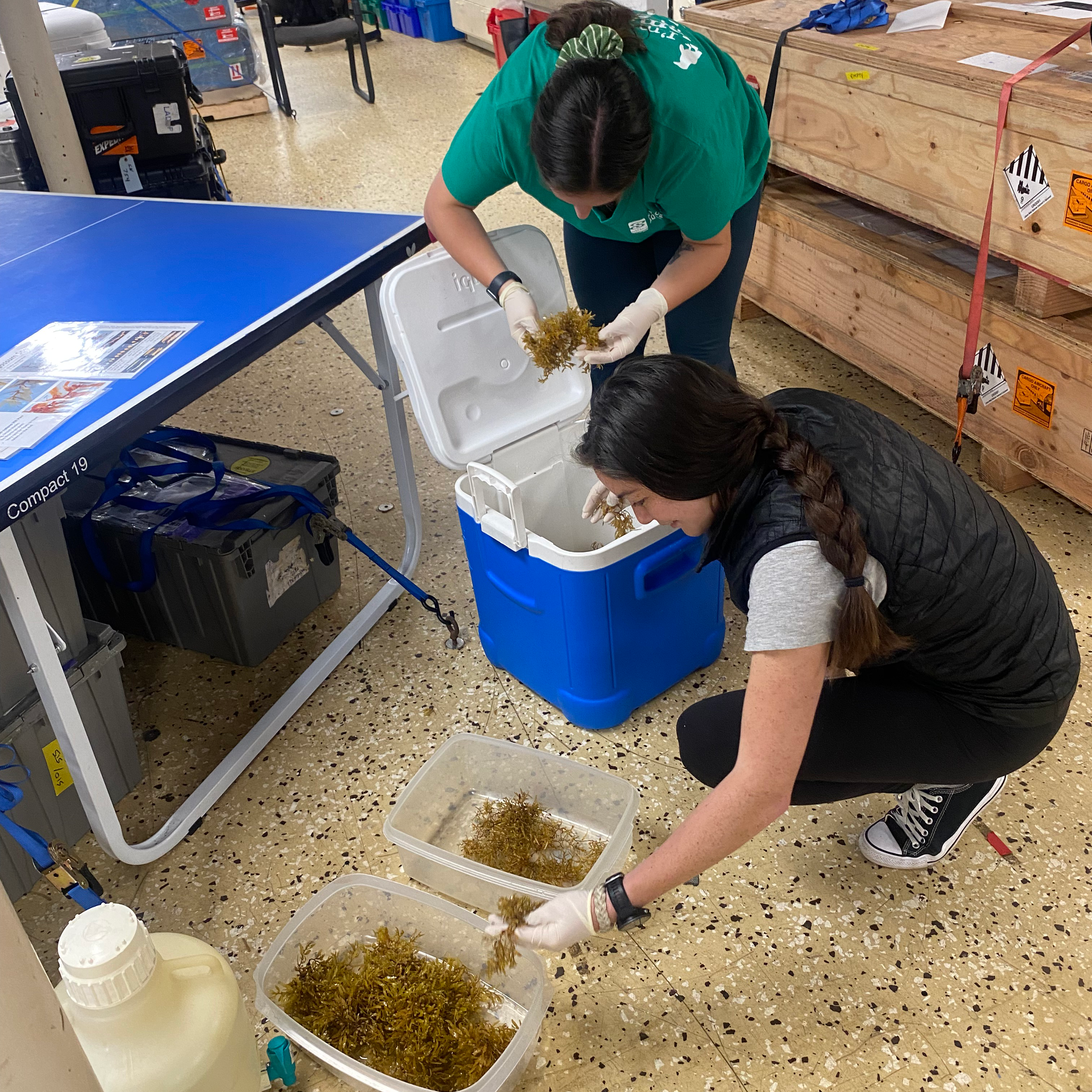
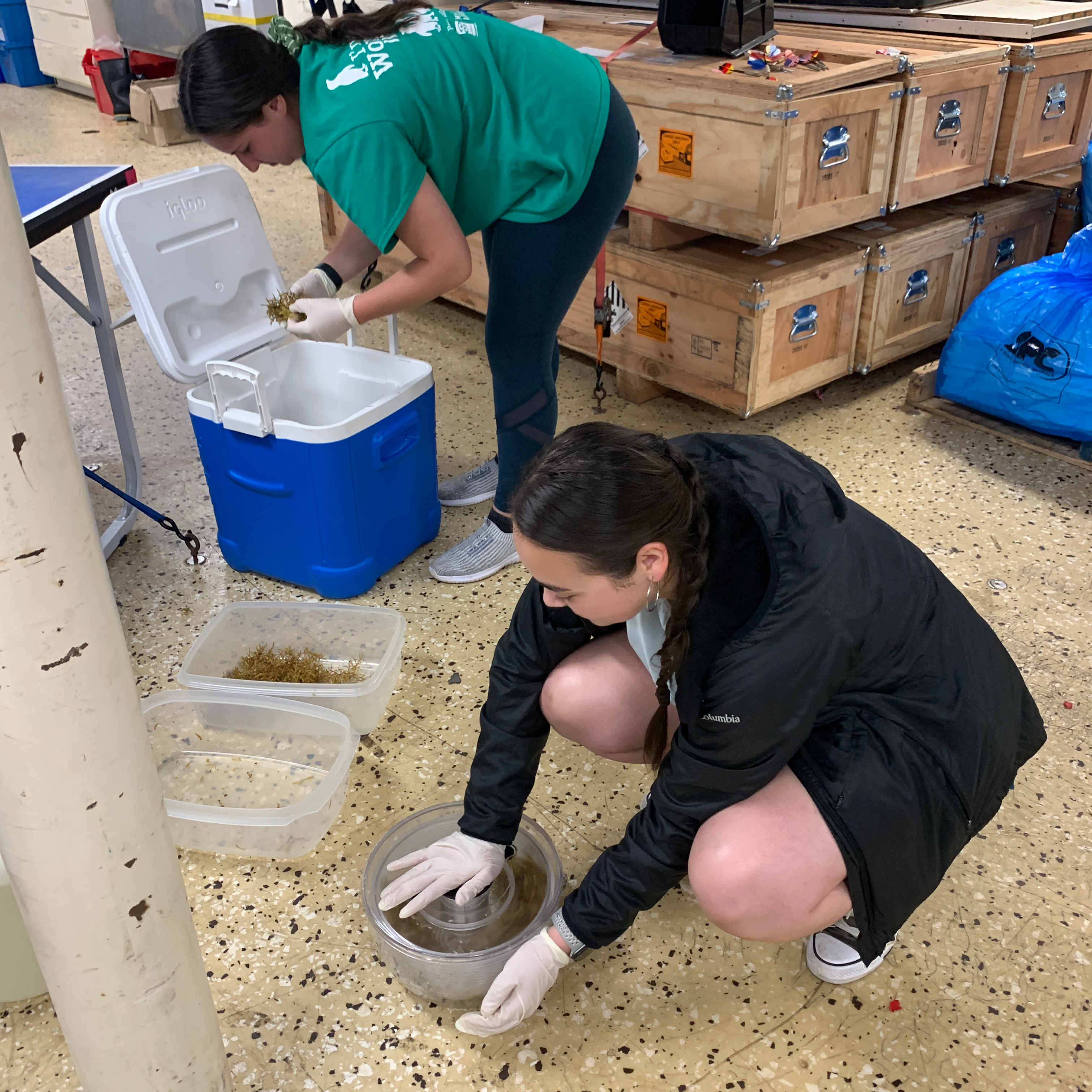
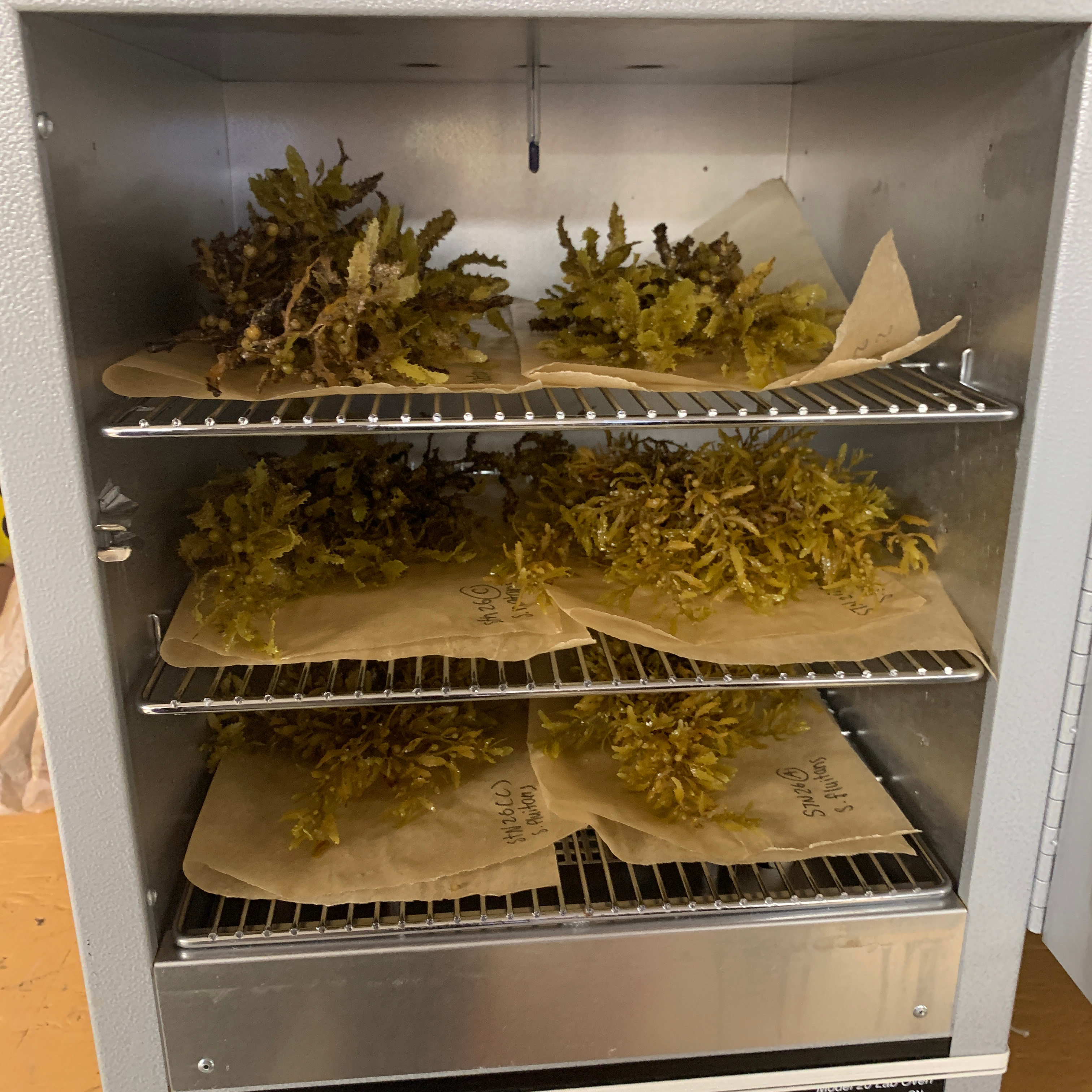
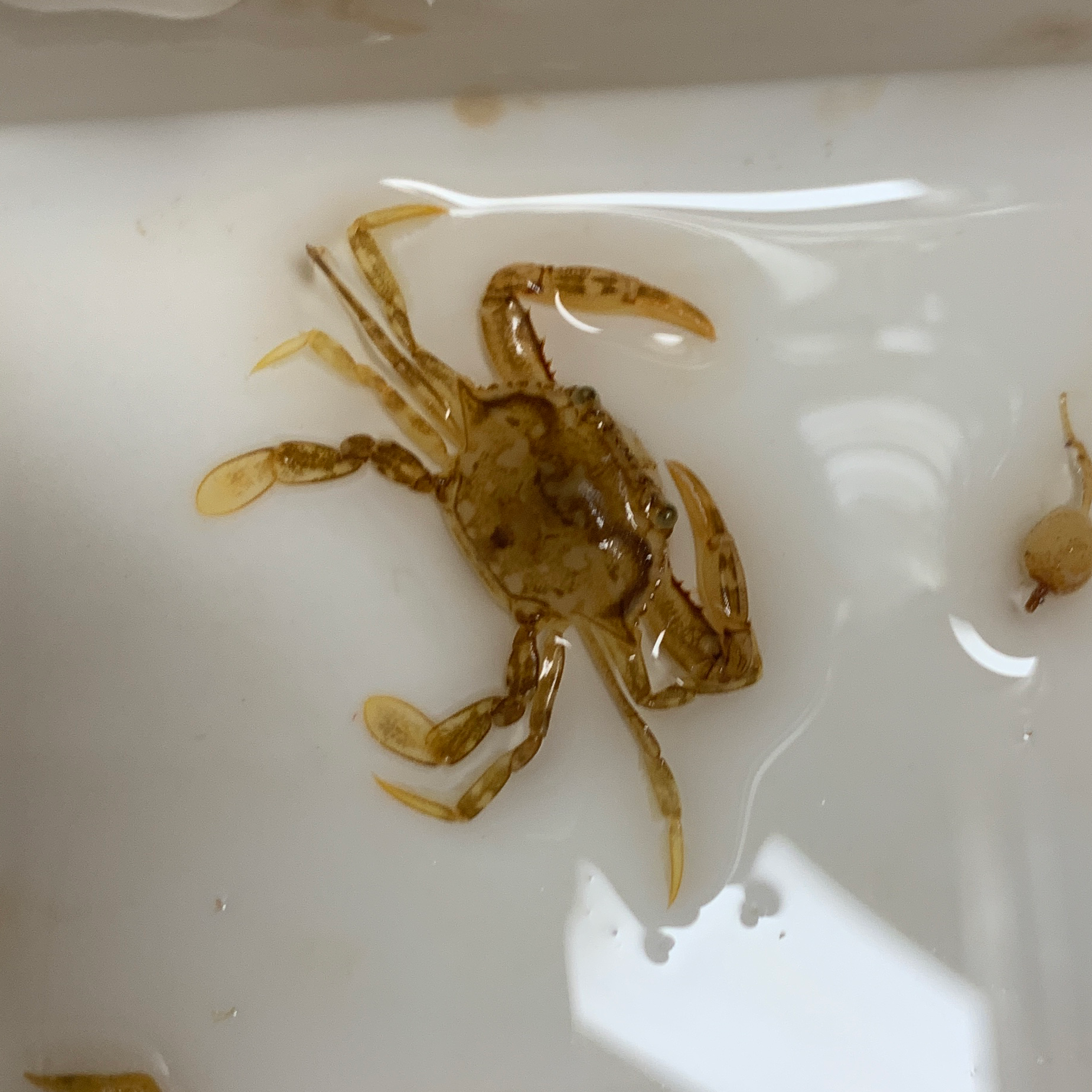
The samples undergo various analyses to understand the chemical composition of Sargassum. This information can give insight into where the Sargassum originates and from where they acquire their nutrients. As of right now, Dennis McGillicuddy and collaborators only have samples from the Western Atlantic in the Sargasso Sea, so the samples we are collecting on this cruise are essential for improving our understanding of the Sargassum belt!
